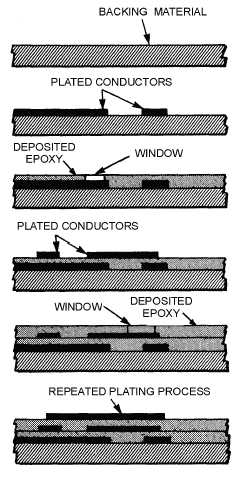1-39
Figure 1-42.—Layer build-up technique.
Advantages and Disadvantages of Printed Circuit Boards
Some of the advantages and disadvantages of printed circuit boards were discussed earlier in this
topic. They are strong, lightweight, and eliminate point-to-point wiring. Multilayer printed circuit boards
allow more components per card. Entire circuits or even subsystems may be placed on the same card.
However, these cards do have some drawbacks. For example, all components are wired into place, repair
of cards requires special training and/or special equipment, and some cards cannot be economically
repaired because of their complexity (these are referred to as THROWAWAYS).
MODULAR ASSEMBLIES
The MODULAR-ASSEMBLY (nonrepairable item) approach was devised to achieve ultra-high
density packaging. The evolution of this concept, from discrete components to microelectronics, has
progressed through various stages. These stages began with cordwood assemblies and functional blocks
and led to complete subsystems in a single package. Examples of these configurations are shown in figure
1-43, view (A), view (B), and view (C).

